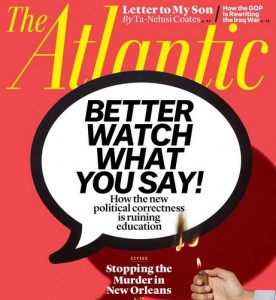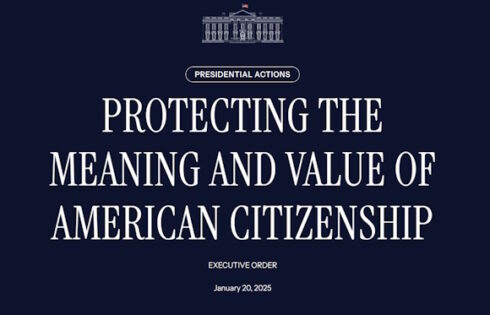
Freedom of speech at universities remains a pressing concern
A majority of universities across the nation continue to infringe upon their students’ First Amendment right to free speech, according to a 2015 survey of campus policies published by the Foundation for Individual Rights in Education.
Once bastions of free expression and open debate, modern American universities prohibit speech in a variety of ways to protect students from ideas some deem “offensive,” “harmful” or “upsetting.”
According to the foundation’s report, “Spotlight on Speech Codes 2015: The State of Free Speech on Our Nation’s Campuses,” nearly 55 percent of the 437 universities analyzed have “policies that clearly and substantially prohibit protected speech,” earning the group’s “Red Light” designation.
FIRE conducts a yearly free speech review of the nation’s universities to assess their adherence to the First Amendment, and this year’s stats showed nominal improvement over previous ones.
“Last year, that figure stood at 58.6 percent; this is the seventh year in a row that the percentage of schools maintaining such policies has declined,” the group noted.
But don’t pop the champagne cork just yet. The foundation’s president, Greg  Lukianoff, co-penned a cover story for The Atlantic this month which warns the tide has turned so far that now some students want protection from other students’ and professors’ “scary ideas.”
Lukianoff, co-penned a cover story for The Atlantic this month which warns the tide has turned so far that now some students want protection from other students’ and professors’ “scary ideas.”
“A movement is arising, undirected and driven largely by students, to scrub campuses clean of words, ideas, and subjects that might cause discomfort or give offense,” he wrote. “This new climate is slowly being institutionalized, and is affecting what can be said in the classroom, even as a basis for discussion.”
RELATED: Law students complain rape law too traumatizing to study, law professors say
While the percentage of higher education institutions with restrictive speech codes appears to have declined over the past six years, FIRE reports that many speech codes may simply have been rebranded as “anti-harassment policies” following pressure from the Department of Education’s Office for Civil Rights.
Universities even hold faculty training sessions to familiarize them with new anti-harassment policies, such as the University of California’s microaggression training seminars for faculty leaders. In these sessions, professors were taught that saying “America is the land of opportunity” is an offensive “microaggression.”
Or take the screenshot from a faculty training session at Marquette University – a Catholic institution – which included a slide about peers Becky and Maria talking about their opposition to same-sex marriage. A hypothetical listener, Hans, overhears the conversation and reports the two women for harassment on the grounds that he found their speech offensive. Hans’ action as an informant is condoned in a subsequent slide, and suggest the women are guilty of harassment.
As for students, while public universities (as opposed to private ones) are legally bound to protect their students’ free speech rights, 54.1 percent of the 333 public institutions surveyed “clearly and substantially” restrict their students’ freedom of speech, according to FIRE. Seven years ago, 79 percent of public schools received a red light rating, it added.
“Since public colleges and universities are legally bound to protect their students’ First Amendment rights, any percentage above zero is unacceptable, so much work remains to be done,” the report notes.
Speech restrictions are often done via speech codes or anti-harassment rules, policies prohibiting speech on campus that would otherwise be permitted in the public square. Moreover, schools and universities can suspend students for violating speech codes without notice or a hearing, substantially violating their Fifth Amendment right to due process.
Speech codes “impermissibly prohibit speech on the basis of content and/or viewpoint,” FIRE reports. Examples include bans on “offensive language” or “disparaging remarks.” The power to decide whether speech is offensive or disparaging rests in the hands of the accuser, and therefore nearly any type of speech can be prohibited, the group explains.
Among examples cited in FIRE’s report, the University of South Carolina’s speech code “discourages bigotry” and requires everyone to “demonstrate concern for others and their feelings.” The University of Connecticut requires students to “refrain from actions that intimidate, humiliate, or demean persons or groups, or that undermine their security or self-esteem.”
RELATED: Students told they cannot lampoon U.S. presidents because campus forbids ‘mocking’
If speech codes don’t do the trick, some institutions have also enacted “free speech zones.” These specified – and often tiny – areas of campus are the only places where students are permitted to exercise their First Amendment right to free speech. Free-speech zones, though content-neutral unlike speech codes, control where, when, and how speech may be expressed.
Some members of academia – even law professors – believe that universities are well within their rights to infringe upon students’ First Amendment rights.
University of Chicago Law Professor Eric Posner published an op-ed affirming the right of universities to establish speech codes, arguing students need protection.
“Many critics of these codes…complain that universities are treating adults like children,” he wrote. “The problem is that universities have been treating children like adults.”
But Bloomberg‘s Megan McArdle, in an op-ed titled “Sheltered Students Go to College, Avoid Education,” said speech codes are having a detrimental effect on higher education.
“A university education is supposed to accomplish two things: expose you to a wide variety of ideas and help you navigate through them; and turn you into an adult, which is to say, someone who can cope with people, and ideas, they don’t like. If the schools abdicate both functions, then the only remaining function of an education is the credential. But how much will the credential be worth when the education behind it no longer prepares you for the real world?”
Like The College Fix on Facebook / Follow us on Twitter





Please join the conversation about our stories on Facebook, Twitter, Instagram, Reddit, MeWe, Rumble, Gab, Minds and Gettr.